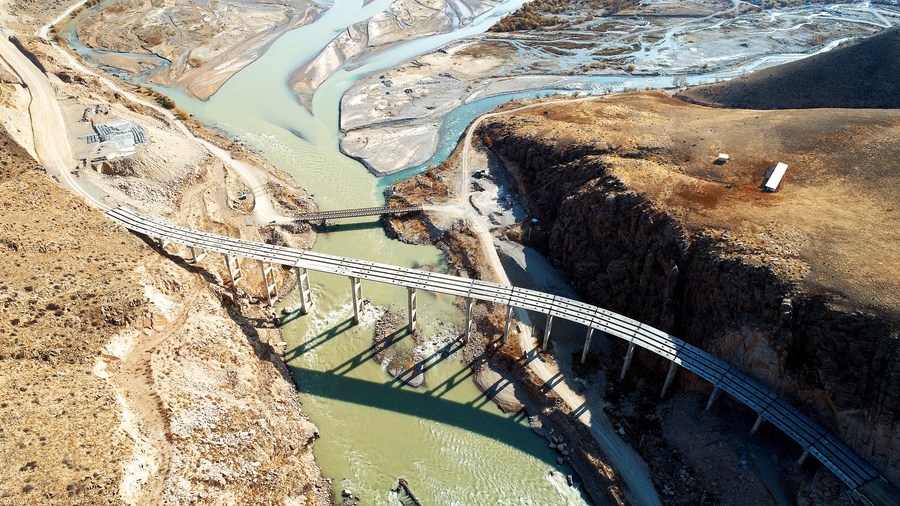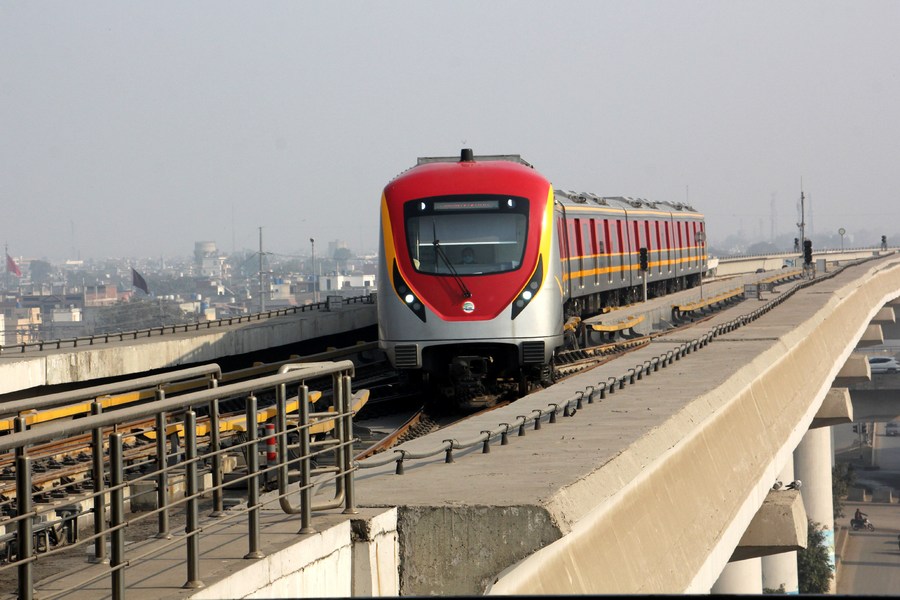[ad_1]

This aerial photo taken on Oct. 27, 2020 shows the construction site of the second phase of the north-south highway built by China within the framework of the Belt and Road Initiative (BRI) in Kyrgyzstan. (China Road&Bridge Corporation/Handout via Xinhua)
By stressing high-quality cooperation, BRI’s small and medium-sized projects often have contributed to local health, education, women’s empowerment, etc, Keith Bennett, a long-term China specialist and vice chair of Britain’s 48 Group Club told Xinhua in a recent interview.
LONDON, June 19 (Xinhua) — The Belt and Road Initiative (BRI) is not only about huge projects, but also about small and medium-sized projects, which often have the most immediate and identifiable impact on people’s lives, Keith Bennett, a long-term China specialist and vice chair of Britain’s 48 Group Club, has said.
By stressing high-quality cooperation, BRI’s small and medium-sized projects often have contributed to local health, education, women’s empowerment, etc, Bennett told Xinhua in a recent interview.
“People who are brought out of poverty, they spend money, buy products, start small businesses … Poverty alleviation and development go hand in hand,” he said.
Bennett has been following the initiative ever since it was put forward. He told Xinhua that he had attended several international conferences connected with the BRI, during which he witnessed “the huge degree of international support and enthusiasm for the BRI.” During COVID-19 pandemic, he helped organize a webinar on BRI cooperation in South Asian countries.
“What we’ve seen is a really remarkable development of the BRI over the past ten years,” he told Xinhua in a recent interview.
In Bennett’s view, the initiative is so ambitious, “it’s about nothing less than … re-drawing the map of the world in terms of communications connectivity, trade routes, supply chains, and so on.”
He noticed that over three-quarters of the world’s countries have signed up to the BRI in one way or another. Even in countries that have not formally signed up to the BRI, there is still a lot of interest among business people and social circles.
“I’m sure many of them will have a greater degree of synergy and integration into the BRI in the future,” he said.
Bennett was invited to visit the China-Pakistan Economic Corridor (CPEC) in 2017. “For me, the visit to Pakistan was very special.”
“People there said the friendship is higher than the Himalayas and sweeter than honey,” recalled Bennett, deeply impressed by the deep-rooted Pakistan-China friendship he witnessed during that trip.
“I think it does reflect the sentiments of Pakistani people from (not only) high-level government ministers and leading entrepreneurs, but also the waiters in hotels or ordinary workers on projects,” he said, adding that the CPEC projects “rests on this deep friendship.”
Bennett said he learned from a university director in Quetta, the capital of Pakistan’s Balochistan province, that China is providing scholarships for students from Balochistan to study in China.

An Orange Line metro train pulls into the terminal station in Lahore, Pakistan, Dec. 29, 2021. Officially open to traffic on Oct. 25, 2020, the eco-friendly Orange Line metro train is an early project under the China-Pakistan Economic Corridor (CPEC), a flagship project of the China-proposed Belt and Road Initiative. (Photo by Jamil Ahmed/Xinhua)
“This is an example of how this big project is giving a much-needed support to the intellectual development of local people, which is a story you’ll never see in the Western press unfortunately,” he said.
As a long-time BRI observer, Bennett acknowledged that in the West there are some ignorance, misunderstanding and even deep-seated prejudice against the BRI. Nevertheless, people in participating countries of the BRI can see with their own eyes, and make their own judgements.
“No country can fundamentally develop in isolation,” said Bennett, adding that the central themes of BRI met with the countries’ development needs. “Development needs can only be realized if countries can be better integrated into the global economy, global supply chains and so on.”
In his view, by providing roads, broadband connectivity and other infrastructural developments, the initiative is making a community with a shared future possible.
“If (the vision) of a community with a shared future is the common home of humanity, the Belt and Road Initiative is like the bricks that you build the house with,” he said.
(Web editor: Zhang Kaiwei, Liang Jun)
[ad_2]
Source link



